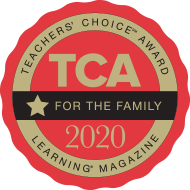Learn more about PEEP and the role of the educator
When given time, space, and interesting materials, preschool children engage in hands-on play, such as making shadows on a wall, or watching water drip from a faucet. This play builds their understanding of how the world works and forms the foundation on which later science understanding is developed. The PEEP approach to preschool science exploration is built on the following developmental principles.
Young children learn from direct contact with objects.
A good science exploration is one that can be investigated using hands-on activities that can be repeated again and again in different ways. Children need to be able to look, touch, and experiment with different objects many times, in many ways, and in different settings. For example, in the Explore Water unit, children observe water drops on leaves after a rainstorm, watch them drip from a faucet or their own fingertips at a sink, and squeeze them from eyedroppers onto wax paper.
Children connect different experiences to form ideas about how things work.
Children draw conclusions based on their experiences. By exploring one science topic for several weeks in many different ways, children build new and more complex understandings. For example, children may think that plants always need light to grow. In the PEEP unit, Explore Plants, children sprout bean seeds next to a sunny window—and in darkness, under a plate. They observe, gather data, and compare the results, expanding their understanding of the role light plays in the development of a plant.
Preschoolers are immersed in their own perspective.
Since young children make meaning from objects and events that affect them directly, science investigations should relate to their interests. Explorations into shadows and plants can grow from questions children ask, such as: Why does my shadow disappear? How can I keep my plant alive?
Children like to exert control over their environment.
When children can act on objects or events and see a response, they feel empowered and begin to understand cause-and-effect relationships. Science investigations should include plenty of opportunities for children to pose “What happens if...?” questions, to make choices, and then observe the results of their actions. For example, in a shadow investigation, a child might ask, "What happens if I move my hand closer to the lamp?" Trying it out, the child discovers that the shadow of his or her hand grows larger and blurrier the closer it gets to the lamp.
The Role of the Educator
An important ingredient for rich science experiences is you, the educator! As a teacher, you do not need to be a science expert and have all the answers. Your role is to support children’s science play by:
- preparing yourself and your child care
- playing alongside children
- asking open-ended questions
- making cross-curricular connections
- helping children reflect
Prepare Yourself and Your Classroom
Each PEEP unit begins with a section called Preparing to Teach. A series of quick activities leads you through a hands-on exploration of the same materials your students will be using.
It includes questions that help you reflect on what you’ve learned and how you might apply it to your teaching. For example, in the Explore Shadows unit, questions will ask you to think about how shadows change and move when you hold a flashlight above an object, then move it around in circles. Reflecting about what happened and why you think it happened parallels the process your students will use.
Your firsthand experience with the materials will help you think of ways your children might use them. How might you want to prepare the space or adapt the activity? What kinds of questions might your children have? An Educator Reflection section gives you a chance to think back on the unit, and evaluate both the successes and the challenges.
Play Alongside Children
Science exploration in each PEEP unit offers children time to freely explore the materials you have provided, both indoors and outdoors. Find out what children think and what interests them by observing their play. Watch what they do with the materials and listen to their comments about what they are doing. This can help you discover what children know about a topic, what interests them, and what kinds of experiences will lead them to new discoveries.
Then play alongside your students, using the guided activities provided in the curriculum. While you do this, model scientific skills and attitudes, such as curiosity, focused engagement in an activity, and a willingness to share ideas. You can also provide assistance when needed—helping a child to trace a shadow, for example, or holding a funnel over a bottle. When appropriate, emphasize rules regarding the safe use of materials.
Ask Open-Ended Questions
Questions can transform ordinary play into science play by keeping children focused on observing, asking questions, and drawing conclusions based on evidence. The PEEP curriculum provides examples of these open-ended questions throughout. For example: "Look at Carly’s shadow on the sidewalk. Can you see her eyes? Why do you think you can’t? Do you think we could make shadows like that indoors? How?"
Make Cross-Curricular Connections
There are many natural, meaningful ways to incorporate language, literacy, and math activities into children’s science play. The PEEP curriculum helps identify these opportunities. Introduce new vocabulary as it comes up in the context of the children’s explorations. Read books related to science topics and encourage children to write, draw, and discuss what they are doing and learning. Provide math experiences as you count, measure, chart, and graph.
Help Children Reflect
Asking children to recall their experiences and share their thoughts and ideas at circle time or in group discussions helps them make sense of their experiences. Each guided exploration in the PEEP curriculum ends with a Reflect and Share section, with suggested questions and activities to help children generalize about their experiences and see patterns.
Science Standards
The PEEP curriculum and pedagogical approach align with the Head Start Child Development and Early Learning Framework. (See the Correlation Chart.) The PEEP curriculum also aligns with the Head Start Approaches to Learning, fostering initiative and curiosity, engagement and persistence, reasoning and problem solving.

 Español
Español








